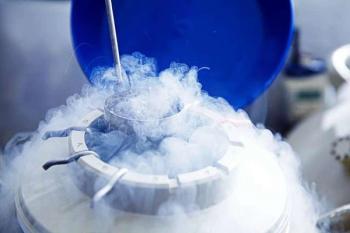
Distinguishing and treating PMS and PMDD
With as many as 9 out of 10 menstruating women reporting some premenstrual moody blues, what criteria do you use to differentiate mild PMS from severe PMS from premenstrual dysphoric disorder? And what treatments are effective?
Your patients wrestle with mood disorders such as depression at nearly twice the rate as men. Women appear to be most vulnerable during their childbearing years, with depression tending to first appear between ages 25 and 44. Other mood disorders that are unique to women because they seem to be linked with changes in reproductive hormones also strike during these years: premenstrual syndrome (PMS), premenstrual dysphoric disorder (PMDD), postpartum depression (PPD), and depressed mood as women approach menopause.
What might link these mood disorders in women, according to one hypothesis, is a sensitivity to normal shifts in gonadal hormones, which affect neuroregulatory systems that play a role in affective disorders. Such shifts occur during the menstrual cycle, in pregnancy and postpartum, and during the years around menopause.
Several studies indicate that mood disorders-including the menstrually-related kind-are underrecognized and undertreated. Partly to blame are imprecise diagnostic criteria to identify these disorders; similarly, treatments have been largely unsupported by scientific data.
Is PMS a distinct disorder from depression?
PMS is a chronic disorder that occurs in women who ovulate. It's been shown to be stable over time, and full remission of untreated cases is rare.1,2 PMS encompasses a broad range of mood, behavioral, and physical symptoms that are entrained to the menstrual cycle. These symptoms arise anywhere from several days to 2 weeks before a woman's period and abate with the menstrual flow. While the severity of symptoms varies, women are usually driven to seek out medical treatment only when symptoms become severe enough to disrupt their normal everyday functioning.
Angry outbursts. Social withdrawal. Bloating. More than 300 symptoms have been associated with PMS. This plethora of symptoms partly results from the lack of widely-accepted criteria for diagnosing the disorder. [It's essential to distinguish PMS from the normal condition and from other physical or emotional problems.]
When only the presence of symptoms is tallied and their severity isn't taken into account, up to 90% of menstruating women report PMS symptoms, a problem that confounds both the epidemiology of the disorder-and its diagnosis. But when you apply severity criteria, the estimated prevalence of severe PMS falls to between 12.6% and 31%.3
Although some evidence points to irritability and tension as the cardinal symptoms of the syndrome, women with PMS also frequently complain of depressive symptoms such as low mood, fatigue, appetite changes, sleep disturbances, and poor concentration. What's tricky is that these predominant symptoms are also symptoms of anxiety and depressive disorders. So it's not surprising that they've often been cited to support the view that PMS is a form of these disorders-particularly depressive disorders. But recent studies say otherwise; they provide evidence that severe PMS is not simply a variant of either depression or anxiety but is a distinct disorder.4,5
Criteria for diagnosing PMS
Five essential components comprise a PMS diagnosis:
Newsletter
Get the latest clinical updates, case studies, and expert commentary in obstetric and gynecologic care. Sign up now to stay informed.
















